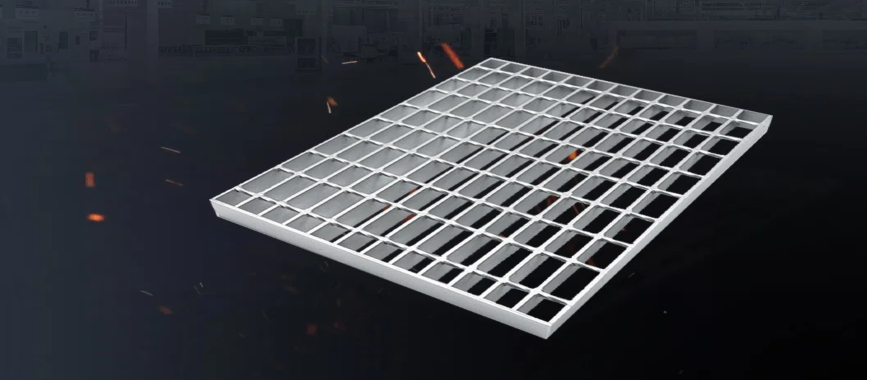
Grating equipment plays a crucial role in various sectors, particularly in food processing and industrial applications. These machines are designed to efficiently shred and process a wide range of ingredients, from vegetables to hard cheeses, enhancing the overall efficiency of food preparation. In industrial settings, grating equipment ensures consistent product quality and reduces manual labor, leading to increased productivity. Additionally, the versatility of grating machines allows for their use in diverse applications, making them an essential asset for commercial kitchens, catering services, and manufacturing plants. By understanding the significance of grating equipment, businesses can better leverage these tools to optimize their operations and meet the demands of their customers.
Types of Grating Equipment
Grating equipment encompasses a variety of machines designed for different applications and materials. Understanding the various types can help businesses choose the right equipment for their needs.
Steel Grating Equipment
Steel grating equipment is specifically designed for heavy-duty applications, often used in industrial environments. This equipment provides robust performance and durability, making it ideal for processing hard vegetables, cheeses, and other dense ingredients.
Common types and materials used:
Carbon steel gratings: Cost-effective and versatile.
Stainless steel gratings: Corrosion-resistant and hygienic, ideal for food processing.
Aluminum gratings: Lightweight and easy to handle.
Metal Grating Equipment
Metal grating equipment offers various solutions for different processing needs.
Overview of metal grating systems: Metal grating systems are designed to withstand high-volume processing and are often used in both food and non-food industries.
| Feature | Metal Grating Equipment | Fiberglass Grating Equipment |
|---|---|---|
| Durability | High | Moderate |
| Weight | Heavy | Lightweight |
| Maintenance Requirements | Low | Low |
| Corrosion Resistance | Good | Excellent |
| Cost | Moderate | High |
Grating Machines for Vegetables
Grating machines for vegetables are designed to simplify the grating process, making food preparation faster and more efficient.
Functionality and features:
Automated operations to reduce labor.
Adjustable grate sizes for various applications.
Safety features to protect operators.
Specific types: Grating machine for carrots: These machines are tailored to handle the unique texture of carrots, providing consistent results and minimizing waste.
Used Grating Equipment
Purchasing used grating equipment can be a smart financial decision for many businesses.
Benefits of purchasing used equipment:
Cost savings compared to new equipment.
Immediate availability for quick setups.
Potential for high-quality equipment at a reduced price.
Opportunity to invest in advanced models that may be otherwise unaffordable.
Key considerations when buying used equipment:
Assessing the condition and maintenance history.
Ensuring compatibility with existing systems.
Verifying warranties or return policies.
Features to Consider When Choosing Grating Equipment
When selecting grating equipment, several critical features can impact performance, efficiency, and safety. Understanding these aspects can help businesses make informed decisions that align with their operational needs.
Material and Durability
The material of the grating equipment significantly influences its longevity and performance. Different materials cater to various applications, so it’s essential to choose wisely.
Benefits of selecting the right material:
Resistance to corrosion: Stainless steel options are ideal for food processing environments.
Strength: Steel grating equipment can handle heavy loads without deforming.
Weight: Lighter materials like aluminum are easier to maneuver but may not offer the same durability as steel.
Grate Size and Thickness Options
Grate size and thickness can vary widely among different models of grating equipment, affecting the outcome of the grated product.
Importance of choosing appropriate grate options:
Customization: Adjustable grate sizes allow for versatile use across different types of food products.
Product consistency: Thicker grates can provide a different texture, which is vital for specific recipes.
Efficiency: Larger grate sizes may process food more quickly, reducing preparation time.
Ease of Cleaning and Maintenance
Maintaining grating equipment is essential for food safety and operational efficiency. Equipment that is easy to clean and maintain can save time and labor costs.
Advantages of ease of cleaning:
Hygiene: Smooth surfaces prevent food residues from accumulating, minimizing contamination risks.
Time-saving: Quick disassembly allows for faster cleaning processes.
Longevity: Regular maintenance is easier when the equipment is designed for straightforward upkeep.
Safety Features and Compliance
Safety is a top priority when choosing any grating equipment. Ensuring that the equipment meets safety standards and has adequate safety features can prevent accidents in the workplace.
Key safety features to look for:
Emergency shut-off switches: These can help operators stop the machine quickly in case of an emergency.
Protective guards: Shields prevent accidental contact with moving parts during operation.
Compliance with regulations: Equipment should meet local health and safety standards to ensure safe operation.
By considering these features when selecting grating equipment, businesses can enhance their operational efficiency, maintain high safety standards, and ensure product quality. These considerations ultimately lead to a more productive and secure work environment.
Grating Pedestals: Elevating FRP Grating Solutions Effectively
Applications of Grating Equipment
Grating equipment serves a wide range of applications across various sectors, demonstrating its versatility and importance in both food-related and non-food industries. Understanding these applications can help businesses optimize their processes and enhance productivity.
Domestic Use in Kitchens
In home kitchens, grating equipment simplifies food preparation tasks, making cooking more efficient and enjoyable.
Benefits of using grating equipment at home:
Time-saving: Quick grating of cheese, vegetables, and fruits can significantly speed up meal prep.
Versatility: A variety of grating options allow home cooks to create different textures for recipes.
Healthier meals: Freshly grated ingredients can enhance flavor and nutrition in dishes.
Commercial Kitchens and Catering Services
Grating equipment is essential in commercial kitchens and catering services, where large volumes of food need to be processed quickly and consistently.
Advantages of using grating equipment in commercial settings:
High efficiency: Automated grating machines reduce labor costs and increase output.
Consistency: Uniformly grated ingredients ensure consistent quality in prepared dishes, meeting customer expectations.
Adaptability: Equipment can be adjusted for different types of food, making it suitable for various cuisines and dietary requirements.
Industrial Food Processing and Manufacturing
In industrial food processing, grating equipment plays a critical role in the production of processed foods.
Key benefits of grating equipment in industrial applications:
Scalability: High-capacity machines can handle large volumes, supporting mass production needs.
Reduced waste: Efficient grating minimizes food waste, optimizing ingredient usage.
Compliance: Industrial grating equipment often meets stringent health and safety regulations, ensuring product safety.
Other Potential Applications (e.g., for Non-Food Items)
Beyond food processing, grating equipment can be adapted for various non-food applications, showcasing its versatility.
Examples of non-food applications:
Cosmetics: Grating equipment can process ingredients for personal care products, such as soaps and creams.
Pharmaceuticals: Certain medications may require grating processes for ingredient mixing or preparation.
Recycling: Grating machines can be used to process materials like plastic or rubber for recycling purposes.
Grating equipment serves a diverse range of applications, from home kitchens to large-scale industrial settings. Its efficiency, versatility, and adaptability make it an invaluable tool in both food and non-food industries, driving productivity and ensuring quality across the board.
Rubber Grating: Enhance Safety with Slip-Resistant Surfaces
Buying Guide for Grating Equipment
When investing in grating equipment, it’s essential to make informed decisions to ensure you select the right machinery for your specific needs, taking into account factors such as frp grating weight, which affects handling, transport, and installation. This buying guide will outline critical factors to consider, where to find grating equipment for sale, and tips for evaluating the quality of the equipment.
Factors to Consider When Purchasing
Before making a purchase, consider the following key factors to ensure that the grating equipment meets your operational requirements:
Volume and Capacity:
Determine the amount of food you need to process daily to select equipment that can handle your production needs.
Material and Durability:
Choose materials that will withstand frequent use, especially in high-demand environments like commercial kitchens.
Type of Grating:
Assess the types of grating your recipes require—fine, coarse, or a combination—to ensure the equipment can accommodate your needs.
Ease of Use:
Look for machines that are user-friendly, with intuitive controls and features that simplify the grating process.
Maintenance Requirements:
Consider the cleaning and maintenance needs of the equipment, opting for models that facilitate easy upkeep to save time and effort.
Where to Find Grating Equipment for Sale
Grating equipment is available from various sources, making it convenient to find what you need.
Online Retailers:
Websites like GangLong Fiberglass, and specialized kitchen equipment suppliers offer a wide range of options for different budgets and needs.
Local Suppliers:
Visit local restaurant supply stores or industrial equipment suppliers to view equipment in person and receive immediate assistance.
Manufacturer Websites:
Check the official websites of manufacturers, which may provide detailed specifications, warranty information, and direct purchasing options.
GangLong Fiberglass:We offer an extensive range of products including fiberglass fabrics, fiberglass tubes, fiberglass profiles, fiberglass sheets, and custom fiberglass hand lay-up solutions.
Tips for Evaluating Equipment Quality
Ensuring the quality of grating equipment is crucial for long-term satisfaction and performance. Here are some tips to help you evaluate potential purchases:
Read Reviews:
Look for customer feedback and ratings to gauge the reliability and performance of the equipment.
Check for Certifications:
Ensure that the equipment meets industry standards and safety regulations, which can be indicative of quality.
Inquire About Warranties:
A good warranty can provide peace of mind, indicating the manufacturer’s confidence in their product.
Examine Build Quality:
Assess the overall construction of the equipment. Heavy-duty materials and solid assembly often correlate with longer-lasting performance.
By considering these factors, knowing where to find grating equipment for sale, and evaluating quality, you can make a well-informed decision that enhances your food preparation processes and operational efficiency. Investing in the right grating equipment will ultimately lead to better productivity and improved outcomes in your culinary or industrial applications.
Maintenance and Care of Grating Equipment
Proper maintenance and care of grating equipment are essential for ensuring longevity, efficiency, and safety in operations. Regular upkeep not only prolongs the life of the machinery but also enhances food safety and product quality. Here are some important aspects to consider when maintaining grating equipment.
Regular Cleaning and Upkeep
Regular cleaning is crucial for the performance and hygiene of grating equipment, especially in food processing settings.
Benefits of consistent cleaning:
Prevents contamination: Keeping grating equipment clean minimizes the risk of foodborne illnesses.
Enhances performance: Clean machinery operates more efficiently, reducing wear and tear on components.
Extends lifespan: Regular maintenance can prevent costly repairs or replacements down the line.
Cleaning best practices:
Disassemble parts: Remove grating blades and other components for thorough cleaning.
Use appropriate cleaners: Select sanitizers that are food-safe and effective at breaking down grease and food particles.
Dry thoroughly: Ensure all parts are completely dry before reassembling to prevent rust and corrosion.
Common Issues and Troubleshooting
Despite regular maintenance, issues may still arise with grating equipment. Identifying and addressing these problems promptly can prevent more significant issues in the future.
Common problems to watch for:
Dull blades: If grating performance decreases, it may be time to sharpen or replace the blades.
Clogging: Food particles can accumulate in the machine, causing blockages. Regularly check and clean these areas.
Loose fittings: Periodically inspect connections and fasteners to ensure everything is secure.
Troubleshooting tips:
Refer to the user manual: Many common problems have straightforward solutions outlined in the manufacturer’s guidelines.
Consult customer support: If issues persist, reach out to the manufacturer for assistance or advice.
Importance of Following Manufacturer Guidelines
Adhering to the manufacturer’s guidelines for maintenance and operation is critical for maximizing the effectiveness and safety of grating equipment.
Key reasons to follow guidelines:
Optimized performance: Manufacturers design their equipment with specific maintenance needs in mind to ensure peak performance.
Warranty protection: Following recommended care practices often safeguards the warranty, protecting your investment.
Safety assurance: Manufacturers provide guidelines that help prevent accidents and ensure safe operation.
By prioritizing maintenance and care for grating equipment, users can enhance operational efficiency, ensure food safety, and extend the lifespan of their machinery. Regular cleaning, prompt troubleshooting, and adherence to manufacturer guidelines are all essential practices that contribute to the overall success of food preparation and processing activities.
Cost-Effectiveness of Using FRP Grating with Chequered Plate
Innovations in Grating Equipment
The field of grating equipment has seen significant innovations in recent years, driven by advancements in technology and growing environmental consciousness. These developments enhance efficiency, improve safety, and contribute to sustainability in food processing and other industries.
Recent Advancements in Technology
Technological innovations have transformed how grating equipment operates, making it more efficient and user-friendly.
Benefits of technological advancements: Many modern grating machines feature automation that minimizes manual labor and speeds up production, reducing the need for reliance on a grating manual for routine tasks.
Smart technology integration: Some equipment now includes IoT capabilities, allowing users to monitor performance remotely and receive alerts for maintenance needs.
Precision engineering: Advances in blade design and material composition lead to sharper, longer-lasting blades that produce consistent results.
Trends in Eco-Friendly Materials and Designs
As sustainability becomes increasingly important, manufacturers are incorporating eco-friendly practices and materials into grating equipment design.
Advantages of eco-friendly innovations:
Reduced environmental impact: Using sustainable materials helps decrease the carbon footprint associated with production.
Recyclability: Equipment designed with recyclable materials contributes to a circular economy, allowing for easier disposal and reuse.
Energy efficiency: New designs often focus on reducing energy consumption, which can lead to cost savings in operational expenses.
Future Outlook for Grating Equipment in Various Industries
The future of grating equipment is promising, with ongoing research and development aimed at enhancing its capabilities across different sectors.
Potential future developments:
Customizable solutions: As customer demands evolve, manufacturers may offer more tailored equipment solutions to meet specific industry needs.
Integration with food safety systems: Future grating equipment could incorporate advanced hygiene monitoring systems to ensure compliance with food safety regulations.
Enhanced user interfaces: User-friendly designs and touchscreen controls may become standard, simplifying operation and reducing the learning curve for new staff.
Innovations in grating equipment are transforming the landscape of food processing and other industries. By embracing advancements in technology, eco-friendly materials, and forward-thinking designs, businesses can enhance their operations, reduce environmental impact, and stay competitive in an ever-evolving marketplace. As these trends continue to develop, grating equipment will play an increasingly vital role in driving efficiency and sustainability across various applications.
FAQs About Grating Equipment
Grating equipment varies widely based on the intended use, from simple kitchen tools to advanced industrial machinery. In domestic settings, the most common equipment includes manual graters like box graters, microplane graters, and rotary graters. Each of these tools serves specific purposes, such as grating cheese, vegetables, and citrus zest. For commercial kitchens, electric graters provide higher efficiency and consistency, making food preparation faster. In industrial food processing, specialized machines such as drum graters and continuous-feed graters are used to handle large volumes of food. These machines can quickly shred, slice, or grate ingredients like potatoes, carrots, and cheese, ensuring uniformity and saving time. Depending on the volume and type of food being processed, businesses can choose from various grating equipment to optimize their operations.
A grating instrument typically refers to any tool or machine designed to shred or grate food items into smaller pieces or fine shreds. In culinary contexts, this includes manual tools like handheld graters and box graters, which are commonly used in home kitchens. Each type of grater features a different surface for varying levels of coarseness, allowing chefs and home cooks to achieve desired textures for their dishes. In a more industrial setting, grating instruments can refer to larger machines that automate the grating process, such as commercial food processors or specialized graters that handle high volumes of food. These instruments are essential for efficiently preparing ingredients, enhancing flavor profiles, and achieving consistent results in both small-scale and large-scale food production.
Grating is performed using various tools and machines, each suited for different types of food and desired results. In kitchens, common tools include box graters, which have multiple grating surfaces for different textures, and microplane graters, known for producing fine shreds or zest. Handheld graters are also popular for quick tasks. For larger-scale operations, electric grating machines are widely used, which can quickly and efficiently grate large quantities of food, such as cheese, vegetables, and fruits. Industrial food processors often incorporate grating features, allowing for seamless integration into the food preparation process. The choice of tool for grating largely depends on the specific culinary task, the volume of food to be grated, and the desired texture or consistency of the final product.
Various types of equipment are used to grate food, catering to both home cooks and industrial chefs. For home kitchens, manual graters like box graters and handheld graters are prevalent. Box graters typically offer multiple grating sizes on one surface, allowing for versatility in preparation. Microplane graters are particularly favored for their ability to create fine shreds of cheese, garlic, and zest from citrus fruits. In contrast, commercial and industrial kitchens often rely on electric graters, which can efficiently handle large volumes of ingredients, significantly reducing preparation time. These machines come in various forms, such as drum graters and continuous-feed graters, which are designed to automate the grating process. The choice of equipment will depend on the specific food items being grated and the required quantity, ensuring that both flavor and presentation are optimized in the final dish.

As the editor of GangLong Fiberglass, I have years of experience and in-depth research, focusing on cable tray products, fiberglass solutions, and grille systems. I incorporate years of industry insights and practical experience into every content, committed to promoting the progress of the industry. At GangLong Fiberglass, my commitment is reflected in every product, from innovative cable trays to durable fiberglass solutions and sturdy grille systems. As an authoritative voice in the industry, my goal is to provide valuable information to professionals and businesses and promote forward-looking solutions.


